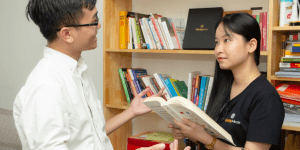Applying Learning Theories: A Case Study in Mexico City
How can we identify our teaching based on different learning theories?
English (as a Second Language) Teachers have acted as facilitators of the language to improve the techniques and methods that exist, and to help learners to achieve their goals.
In this article, I consider a sample of language students I worked with, and their characteristics as foreign language learners. I will identify which of the learning theories can describe their language learning process, and I will mention which of these theories best describes the success and failure of these learners’ language learning.
I will present a group of six learners I worked with for more than four years. This will help me to describe how they learned, how their process has developed, and on which theories I could say their learning has been based on for success, and failure over those years.
It is important for me to emphasise that, at some point, there has been one focus theory, but as time passes and activities change, the theories differ, and their knowledge grows, so they might be combined too.
Who are we talking about?
Let’s talk about the students first: 6 students between 13 and 14 years old, all of them in third grade of secondary school at a private school in Mexico City. They belonged to the “advanced English group”. Four of them are girls, and two are boys. Three of them are B1-B2 level, and the other three are B1 according to the CEFR (Common European Framework of Reference).
At the end of this review, all of them learned by metacognition; that is, by reviewing the information, and thinking about it, using critical thinking skills, and taking into account some different options or contexts to apply knowledge.
They knew each other for more than five years, and they did not have any problems working together, were in constant contact with technology, and expressed their like of English.
As their teacher for a long time, I was able to observe their progress. I noticed they started to have problems with a structured way of learning, they related to information better when it was based on something they were used to seeing every day. Simple and common examples, but then, and helped by how mature they were, their learning process was more fluid, as well as complex, they were approaching language awareness.
What are we talking about? Learning Theories.
Theories of learning (Generally speaking)
Behaviourism
observes the outcome: what has been changed or acquired. Based on a stimulus presented to the learner, and the response. Consequences (rewards and punishments): these are important too, the duration of the response depends on that. We have to focus on creating behavioral patterns which, when acquired, are repeated automatically. Examples that teachers apply in the classroom: drilling, practice with any exercise presented, giving extra points, verbal rewards like “well done!”, amongst others. For punishment some examples are saying the opposite or subtracting points from their notes.
Cognitivism:
on the other hand, is based on the process the learner goes through, not just on the input information and its outcome. Memory plays an important role in this theory. There is also a process inside the learner which only can be “seen” when the information is used. As classroom examples we use contextualization, discussions, solving problems or use of images.
Constructivism:
where the learner approaches the knowledge based on what they already know. This theory focuses on the individual, and learning becomes something different for each individual learner.
Vygotsky, who is one of the most important developers of this theory, mentioned that this was based on the internal processes of the learner, combining culture, history, and social interactions, rather than on the individual construction. Teachers act as guides, and should present different environments of learning even if it cannot be assumed that every student will learn in the same way or by using the same process. There should also be an interaction form (Mvududu, N., & Thiel-Burgess, J., 2012), students can compare their learning, and learn from the others, as well as put that learning into practice, and solve situations according to the diverse contexts they are working at.
This theory is strongly related to schemata, where the learner has to “recycle” or use what they already know and to relate it with what they are learning now. In this way, learners are able to solve problems based on their own pace of learning, knowledge, or stage and motivations; as well as preferences and difficulties in the classroom. Students use it when developing projects, brainstorming, group work, discovery learning, amongst others.
- Universal grammar: developed by Chomsky, where he finds everyone has been dotted with a general grammar, everyone was born with it.
- Monitor theory: where the learner acquires knowledge without correction or feedback, and takes most of its features from the Universal Grammar theory.
- Connectionism: which is based on associations of high exposure. Students are in contact with the information, but to make it lasting, they should be exposed to it for a long period of time.
- Multidimensional model: learners are just taught what they can learn, it is helped by L1. This theory has a strong influence from psychological stages.
- Interactionism: which is mainly about social interactions, how they develop, and communication, because the main aim of a language, is to communicate.
- Sociocultural theory: which is related to culture and mind (Spada, N. & Lightbown, P.M, 2005). These theories also could help us to understand how learners find the path of acquiring information.
How is that related to those students?
To link both of the previous ideas, the students mentioned above could be described according to several theories. I would like to mention how they began to emphasize the transformation they had throughout the time I worked with them. This group of students were in fifth grade of primary. The way they learned at that time was a combination of behaviorism and constructivism, most of the information they knew was just in the context for the exercise presented.
It is difficult to remember the information they said sometimes, based on the principles of behaviorism, these students were also focusing their learning on a trial and error basis. When they confused an answer, they changed it until they got it correct, not exactly because they were acquiring the knowledge.
With time, their learning could also be observed along with constructivism. They were basing their answers on what they had learned by themselves. This had benefits because they were taken into account as individuals, but then, the information was forgotten when they needed to follow up, and it was not equal amongst learners as the pace of learning varied greatly between them.
Becoming more autonomous
After this stage ended, these students became more autonomous and independent while learning. This happened around half time of their second year in middle school. They needed the input, but they were being able to transform the knowledge into something they could use in many contexts and they were producing. In this stage, I would say that constructivism was still applicable to them, but cognitivism appeared because they could use memory (long term this time) as a tool for their learning, and they were basing it on the contexts presented, to relate the information they were acquiring in order to describe the processes they were using, and applying it again. They started to be conscious about their own learning, which demonstrates language awareness, which, as teachers we want for our students.
A combination of constructivism and cognitivism
At this point, these students have taken into consideration many aspects for their own benefit. From behaviorism, they practice pronunciation, due to the drilling needed. For situations of solving problems, students use schemata, and everything they have previously known to process the information and find an answer, which also makes it a creative situation, and every learner could use it at their own pace and form. These solutions are better acquired and shared if they are different; making it a combination of constructivism and cognitivism.
What about the dark side? Failure.
Students were used to practicing the information according to behaviorism. When they wanted to use what they learned, it was confusing for them due to the problem of transferring the information to different scenarios.
The information they had, worked just for one context and putting that into practice in another context, was not possible. An example of this is when we were checking the use of present perfect. These students learned the verbs used for the context of the book, and they memorized the tenses. If there was another context or they were used with different words, the students could not apply them.
It was not until the next school year, when they practiced all the verbs they decided were useful for each of them in a project where they had to create a “verb wheel”, and they created their own context for the verbs they needed the most, that they personalised their own learning, and activated it. When they had different contexts, they represented them and by sharing them, they could check how would they work differently.
Impacting issues
Constructivism impacted on the issues they had. Students could become lost at some points because they were left on their own to take into account their individuality, but when they had to combine their learning, they were at different stages of it, and it was more difficult to balance. Some students were not able to produce a sentence, while others were able to speak for around two minutes without stopping.
A problem or failure I found while analyzing it and based on cognitivism was trusting their memory. When there was a problem with stress or anxiety, students could not perform as requested. Students also needed to have some habits to make an automatic use of the information to apply it.
The theories mentioned above which were not taken into consideration for this analysis were left out because they had no great impact on the way students learned throughout the years under focus. I found the need to mention them to describe some other ideas that exist but this time they did not completely apply for this particular group of language learners.
For example, monitor theory mentions there should not be feedback, and since I started teaching there has been some kind of feedback. This one cannot be erased






